The Cares Route, the Divine Gorge.
In this article we make a summary of everything you need to know to make the Cares Route, suitable for all audiences. We will talk about the route, places of interest, stages, slope, difficulty and some other recommendations. We hope you find it useful.
The Cares Route is the best known of Picos de Europa, it communicates the Leonese municipality of Posada de Valdeón with the Asturian of Poncebos.
The route is long, about 22 km one way, but do not panic because it is of easy difficulty because it is developed without large slopes (about 720m downhill and 100m uphill).
This allows anyone to enjoy it without being so dependent on their physical preparation. In addition, it can be divided into two stages, or the part that interests us the most can be done directly.
Where to start the Cares Route
In this route there are two clearly differentiated parts. The section that goes from Posada de Valdeón to Caín is about 10km long, and the second stage is the most famous and crosses the canyon of the Cares River, also known as “the divine gorge”, about 12km long.
First stage of the Cares Route, from Posada de Valdeón to Caín.
The first stage runs down through lush green forest and surrounded by high peaks of over 2000m, entering the gorge between the central and western massifs. Another option to shorten a little the journey (3km less), is to start directly from the Mirador del Tombo, past the village of Cordiñanes, you can park in the parking lot of the Mill.
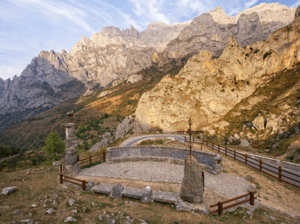
If we start from Posada de Valdeón, we must go down from the town hall, following the white and yellow route signs, towards the river and cross it over the bridge. Taking the path on the right we will arrive at the Mirador del Tombo, where we will see an interpretation table to identify the most important peaks of the Massif Central, and the statue of a chamois, the most characteristic animal of Picos de Europa.
What you can’t miss in Valdeón Valley
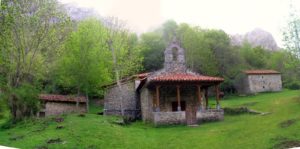
Going down to the river and crossing it, we must continue along a path on the right bank until we reach a clearing in the forest where the emblematic hermitage of La Corona stands, where, according to the Valdeonians, the great conqueror, Don Pelayo, was crowned.
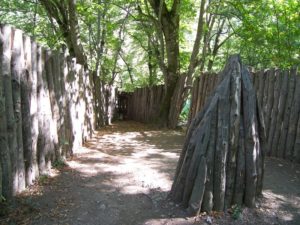
If we continue along the road we come across the chorco de los lobos, an old construction that, as a well, was the end of an ingenious system of palisades, in which the wolf was cornered until it fell, and with sticks and stones it was finished with him.
Males from all over the valley were obliged to participate, and at the ringing of the bell they took their assigned places in the hunt.
Some road sections
It is inevitable to travel some road sections, here we must be extremely cautious and go in single file and within the road markings painted for pedestrians.
Continuing on we reach Las Vegas, where the Cares meets the Peguera, and cross over the Capozo bridge. We continue and after crossing the bridge of Canceles and passing to the right side of the Cares we continue through the gorge of the Caines, which twisted between large rocks makes its way to Cain.
Cain, the town that treasures the “Divine Gorge”.
Cain hides in the depths of the gorge, between the highest peaks of the Central and Western Massifs. The setting is unparalleled and simply overwhelming.
We will find a few restaurants where we can recharge our batteries. In high season, you will have to be patient or arrive a little early.
The original village of Cain is known as Cain de Arriba, currently uninhabited and only used to keep livestock. It is highly recommended to visit it, being able to make a small circular route of approximately one hour. The ascent can be made from the Pendín path and then descend through the sedo.
The hostile environment helped its inhabitants develop skills to move around the verticality of the terrain. They are known to be expert climbers. It is worth mentioning the great feat of “Cainejo” (Gregorio Pérez), who made the first ascent to the Naranjo de Bulnes.
Second stage of the Cares Route, from Caín de Valdeón to Puente Poncebos.
Route description
We will not dwell on this section, as there are no decisions to be made along the way, except for how to take the best photo.
This part is known as the “divine gorge“, it makes its way through a path carved into the limestone, sometimes with tunnels and sometimes with bridges that cross the Cares River.
This section is developed with little slope until it climbs to the Collados, from where there is an extraordinary view of the gorge.
Tips for the Cares Route
We recommend not to go down a somewhat uncomfortable rocky slope that takes you to Poncebos, the end of the route, as the return is very tedious.
This section, for its special beauty and ease in terms of slopes, is the most traveled route of Picos de Europa.
So if you don’t want to have the feeling of being on a pilgrimage, you could:
– Avoid weekends, especially during high season;
– It is also best to do it on a day that is cloudy or light rain, as the views are of the canyon itself;
– And if you do it in the afternoon, it will also be a good choice, since there will be fewer people.
Some frequently asked questions about the Cares Trail
Is it possible to run the Cares Route?
The truth is that there is no such prohibition, but it can be very dangerous, due to the fact that it is a narrow path, sometimes without fences or parapets and with high drops to the Cares River. All this is aggravated when it is very crowded.
Is it possible to ride a bicycle on the Senda del Cares?
It is strictly forbidden to ride a bicycle through the Gorge.
Visit this post to learn more about our electric bicycles.
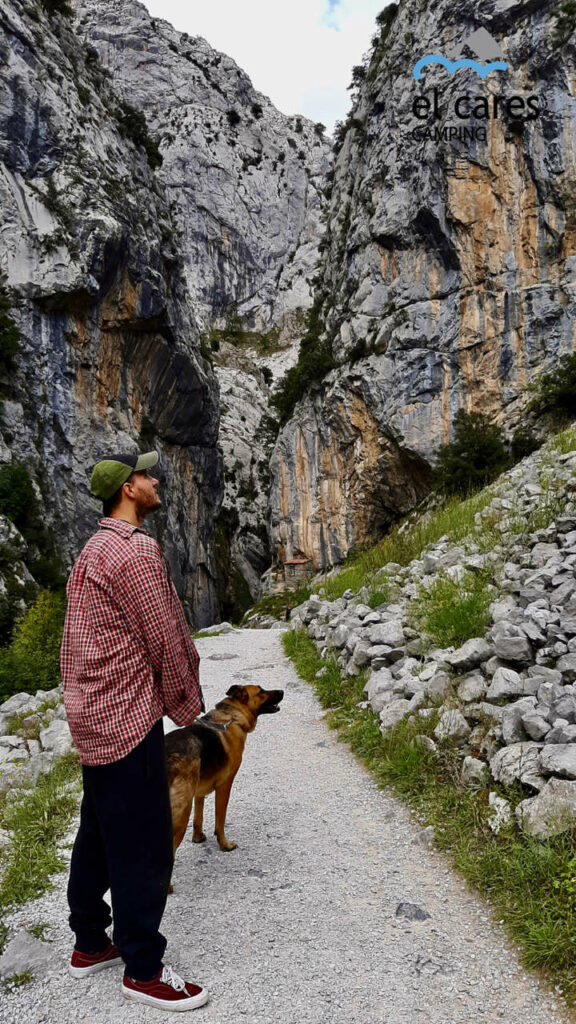
Is it allowed to take the dog loose on the Cares Route?
In the entire Picos de Europa National Park it is forbidden to take pets off leash. You should be especially careful if you encounter wild animals, such as goats, along the route.
Visit this post to spend the best vacations when camping with dogs
Can the Divine Gorge be done with children?
This route can be done with children, but if it is a small child, very lively and uncontrollable, you’d better take him to do the first stage of this route, otherwise we believe that you will be uneasy.
How long does it take to do the Cares Route?
One way only:
From Posada to Cain, about 3 hours. (Downhill)
From Cordiñanes to Cain, about 2.5 hours. (Downhill)
If it is done from Cain to Poncebos, it will take about 3.5 hours.
If you go from Cain to the Collados (without going down the rocky area), about 3 hours.
what do i have to carry in my backpack?
It is important to bring a drink for hydration, some food such as nuts and fruit, a hat and sun protection.
Where to sleep to do the Cares Route?
There are several options to sleep in the Valdeón Valley:
- Diablo de la Peña Hostel If you want to sleep at the foot of the Cares Gorge, you have a very good option in this beautiful hostel, where you can also taste the delicious food of the area.
- Rural Houses in Posada de Valdeón If you come with your family and prefer the comforts offered by a rural house, this may be your option.
- Camping El Cares, if you are more into the adventure of camping in nature, you are a camper or prefer a cabin, take a look at our accommodations.
Planning the best route in Picos de Europa
Depending on one’s ambitions, the excursion can be planned in several ways.
What we recommend from Camping el cares is, as long as you have time, to do both stages one way and on different days.
You can also do one or two outbound stages on the same day, and the return trip can be done by means of a transport option from Puente Poncebos to Posada de Valdeón, Cordiñanes or Cain, depending on where you have left the car. We do not usually recommend the option of returning by public transport, due to its high economic cost, time and curves.
And if you do not have time, the most appropriate thing to do is to do the first stretch and the first kilometers of the divine gorge (which is the most characteristic part, where the gorge is more closed and where the tunnels and bridges are), returning to Cain to take a bus or cab to Posada de Valdeón or Cordiñanes.

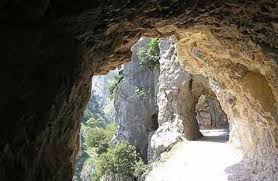
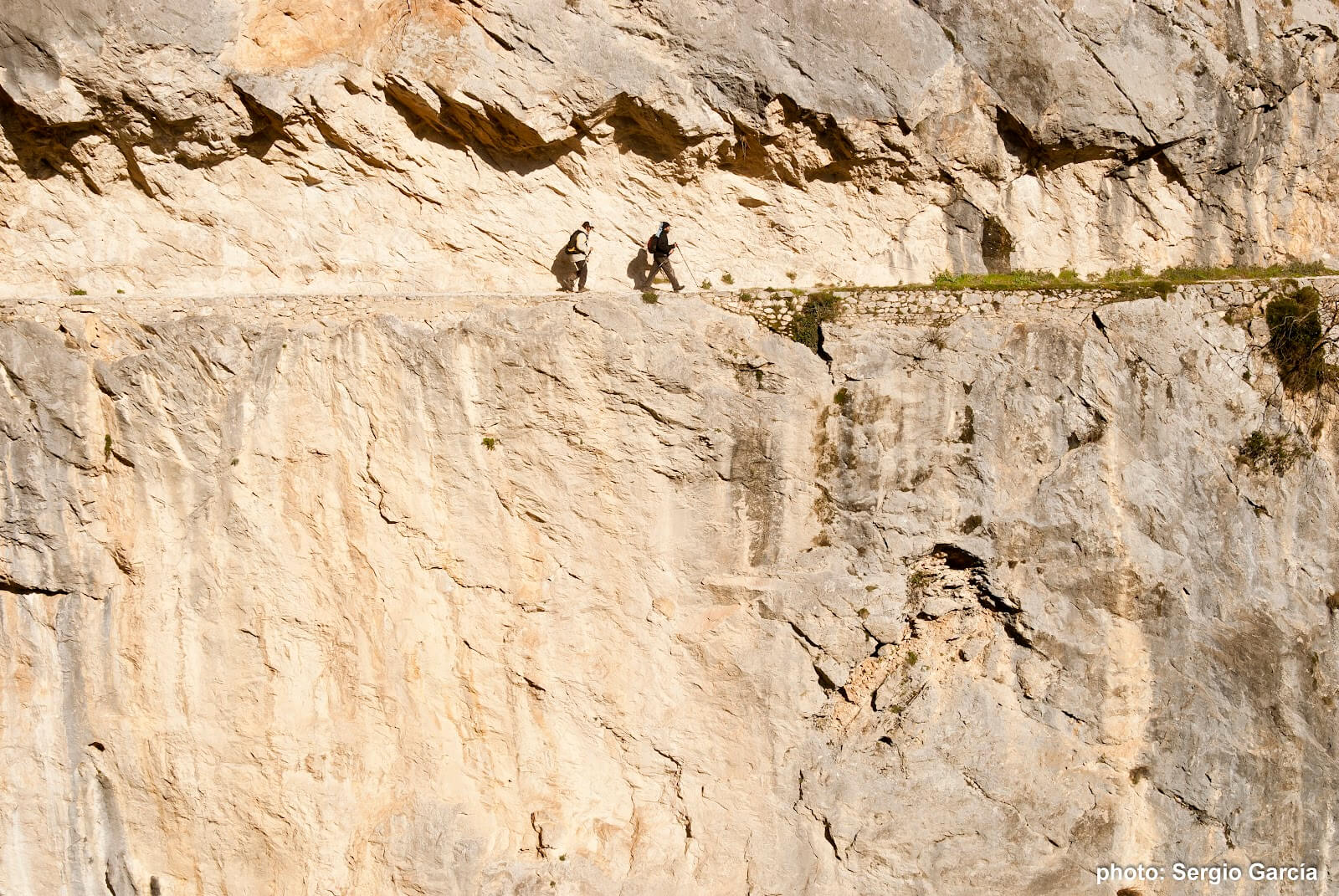
Divine Gorge
